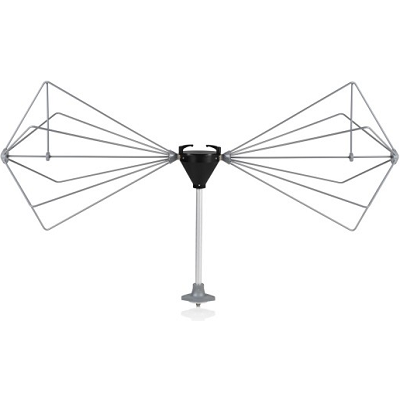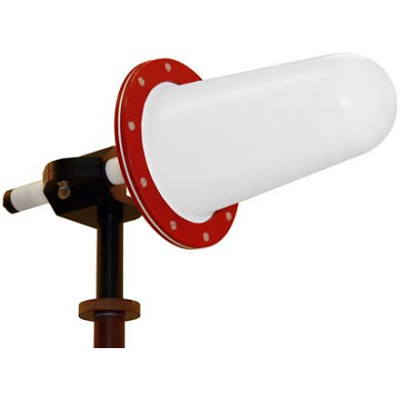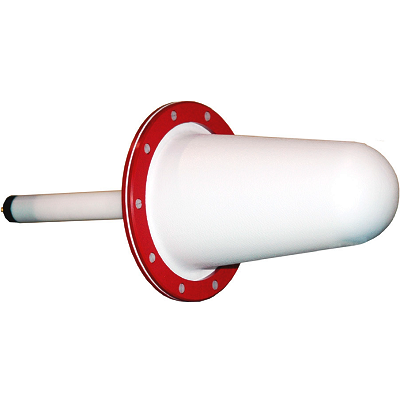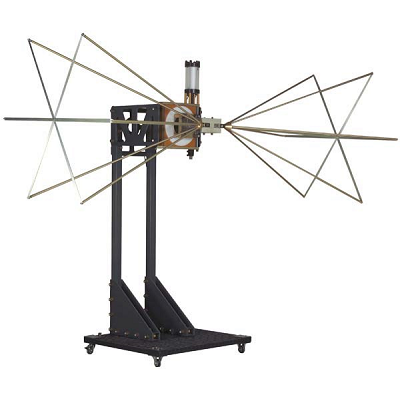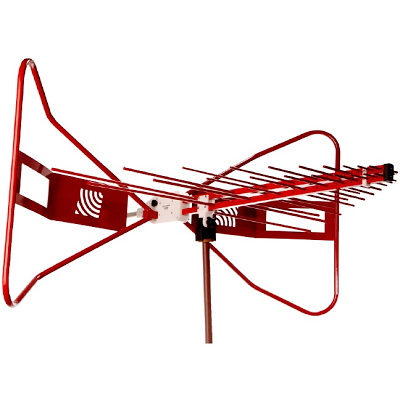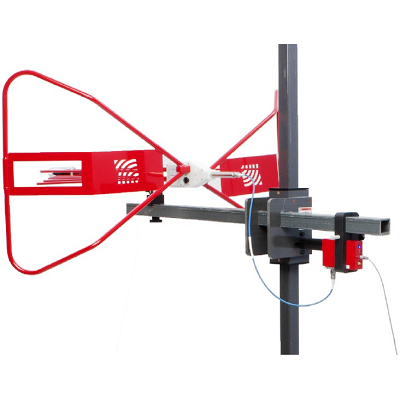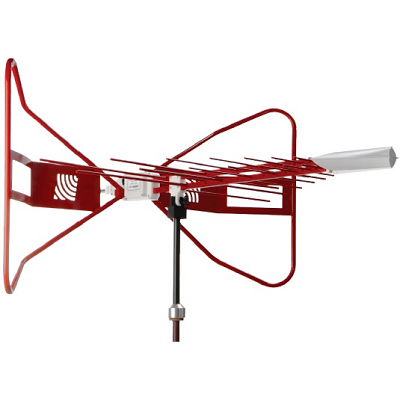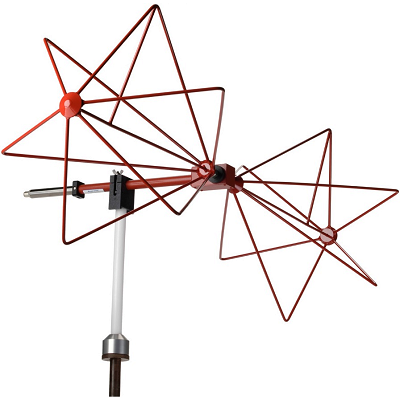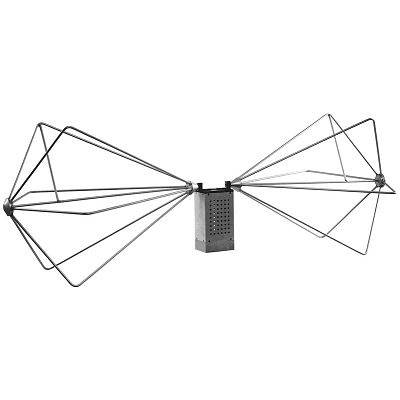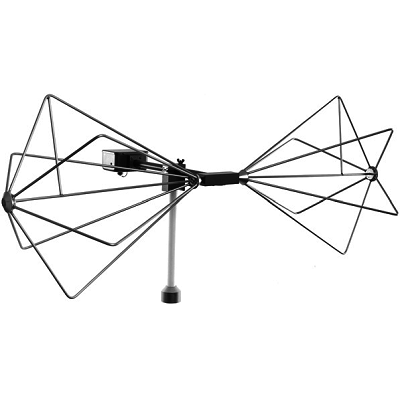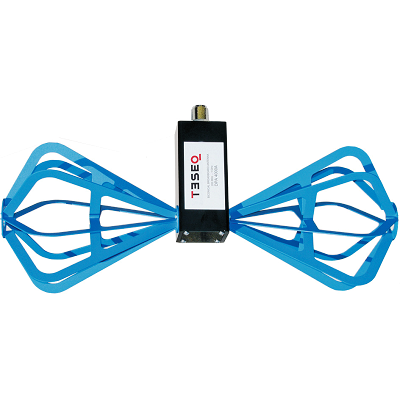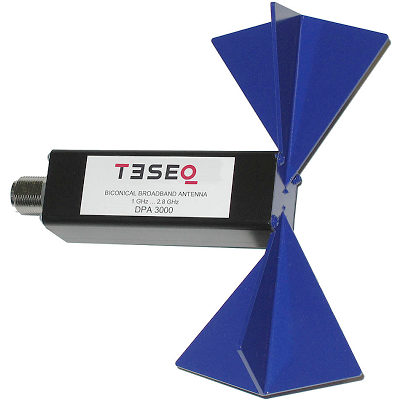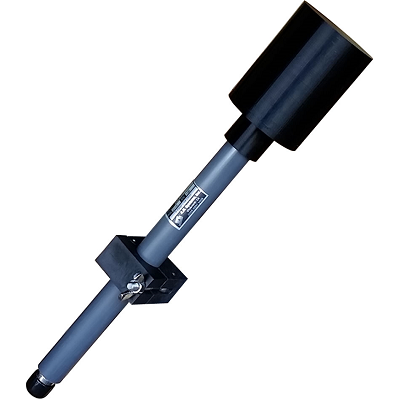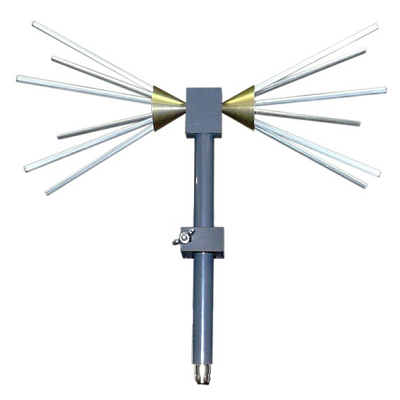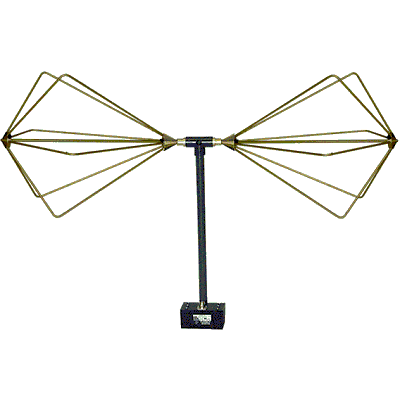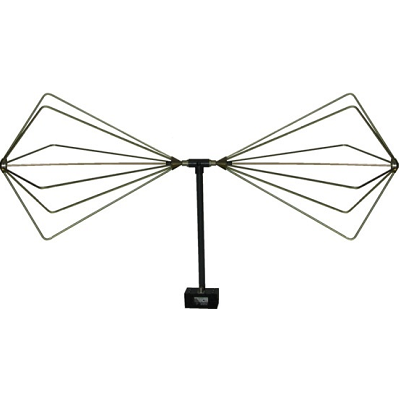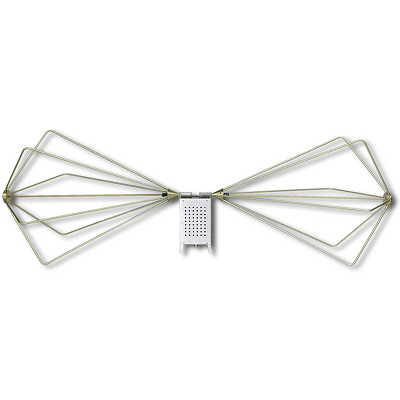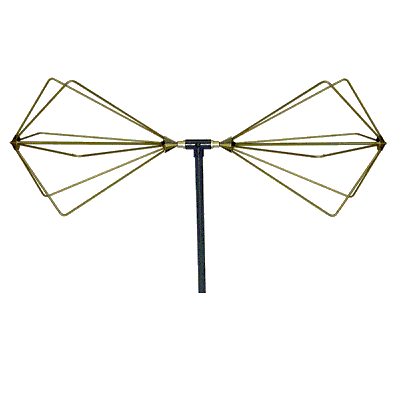Biconical Antennas
Biconical antenna is the standard workhorse of any EMC test house for compliance emissions testing. They provide reliable, repeatable measurements. a biconical antenna is a broad-bandwidth antenna made of two roughly conical conductive objects, nearly touching at their points. Biconical antennas are broadband dipole antennas, typically exhibiting a bandwidth of three octaves or more. A common subtype is the bowtie antenna, essentially a two-dimensional version of the biconial design which is often used for short-range UHF television reception. These are also sometimes referred to as butterfly antennas. The biconical antenna has a broad bandwidth because it is an example of a travelling wave structure; the analysis for a theoretical infinite antenna resembles that of a transmission line. For an infinite antenna, the characteristic impedance at the point of connection is a function of the cone angle only and is independent of the frequency. Practical antennas have finite length and a definite resonant frequency. A simple conical monopole antenna is a wire approximation of the solid biconical antenna and has increased bandwidth (over a simple monopole). Biconical (or bicon) antennas are often used in electromagnetic interference (EMI) testing either for immunity testing, or emissions testing. While the bicon is very broadband, it exhibits poor efficiency at low frequencies, resulting in low field strengths when compared to the input power.

